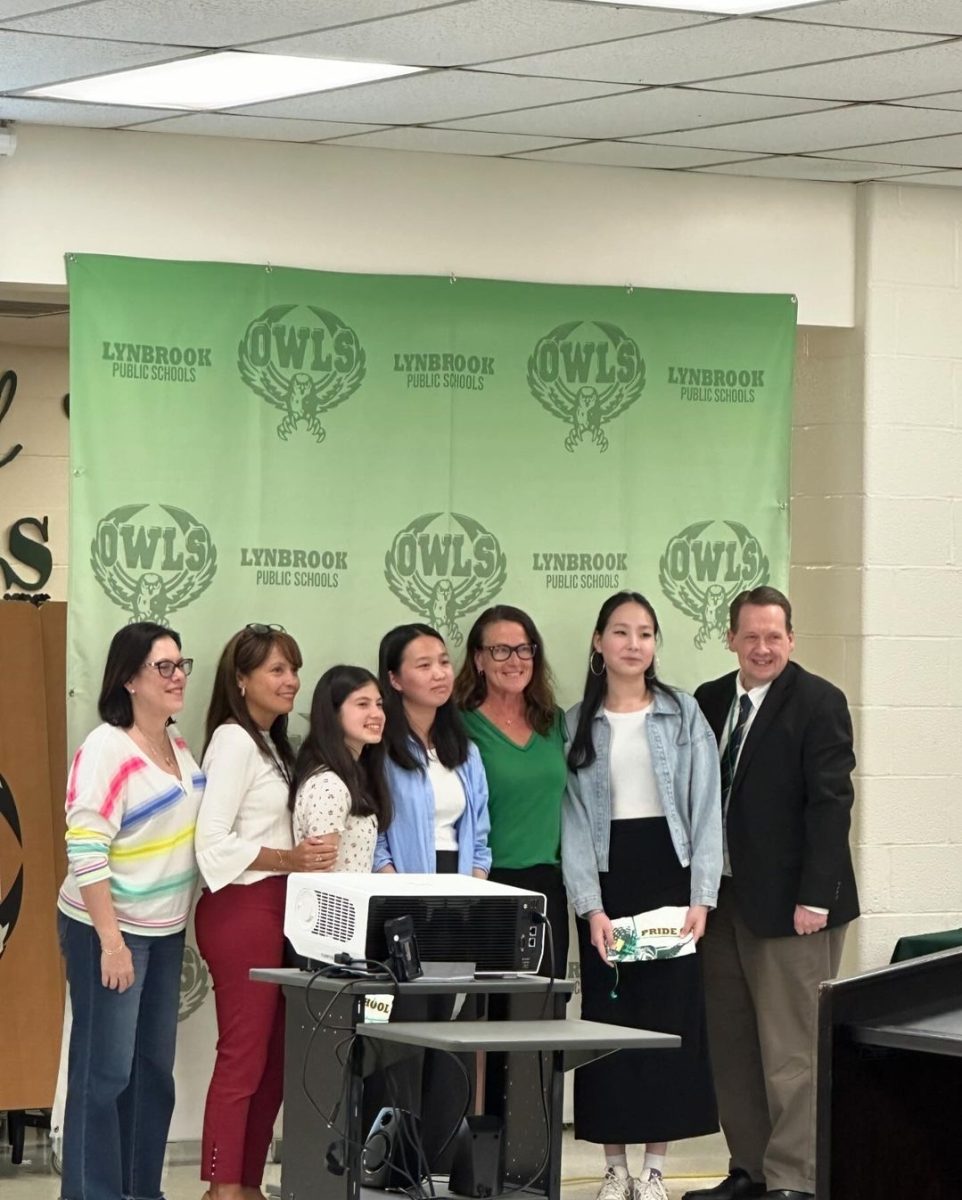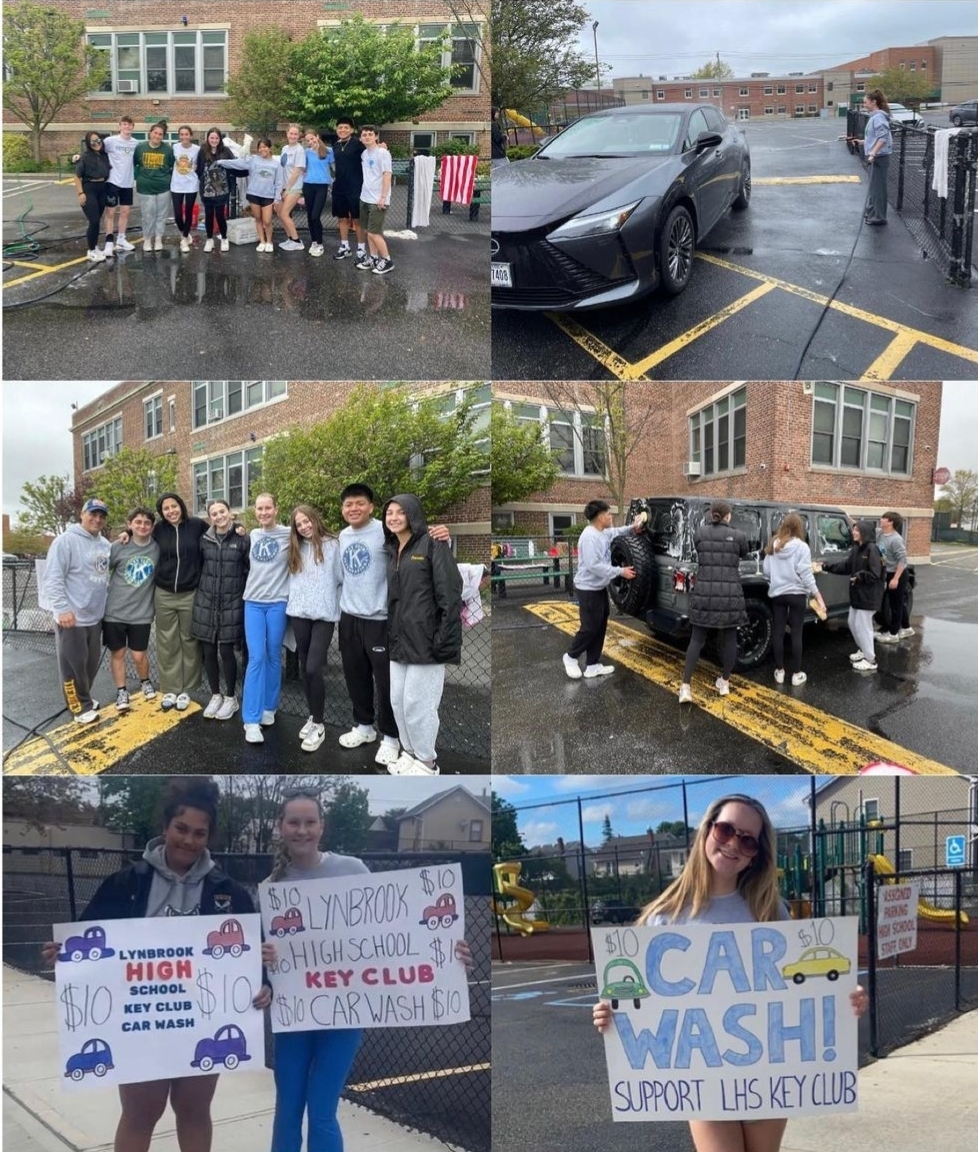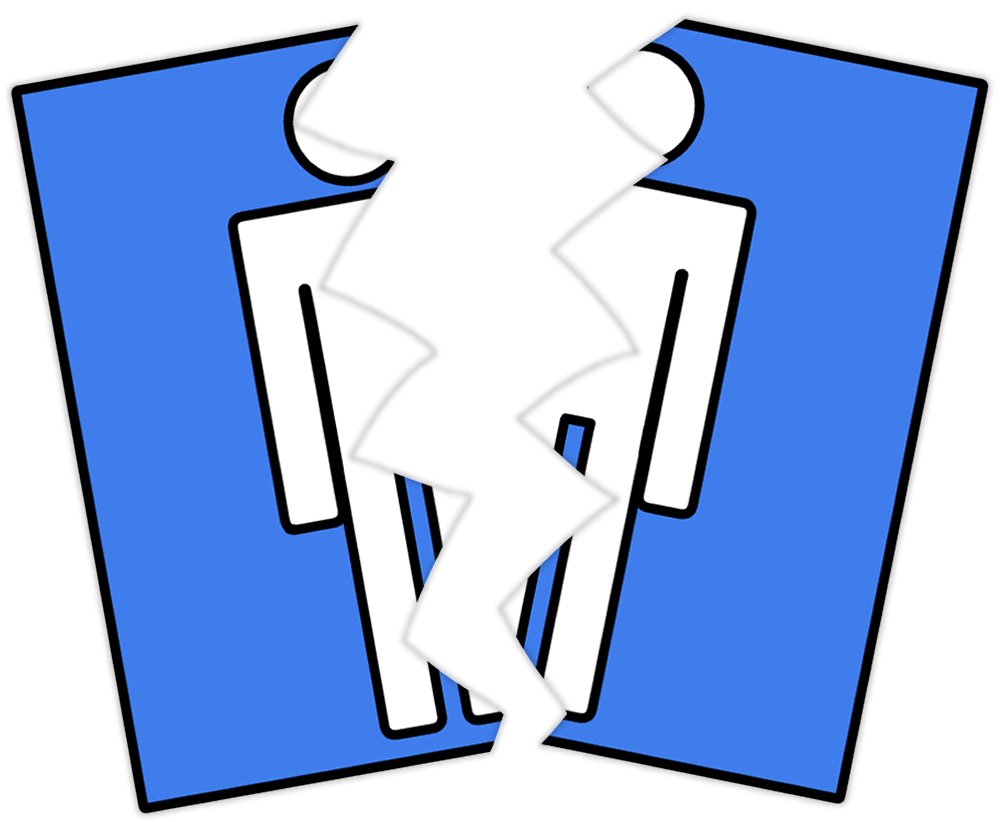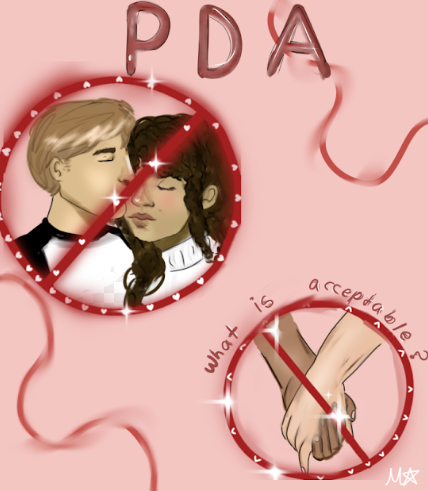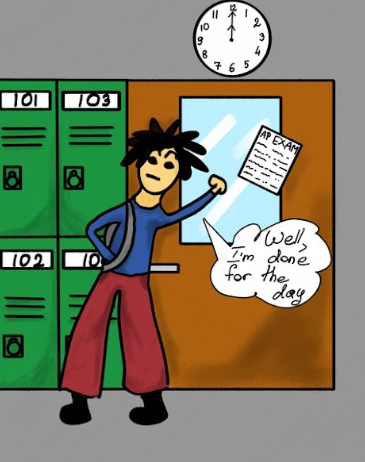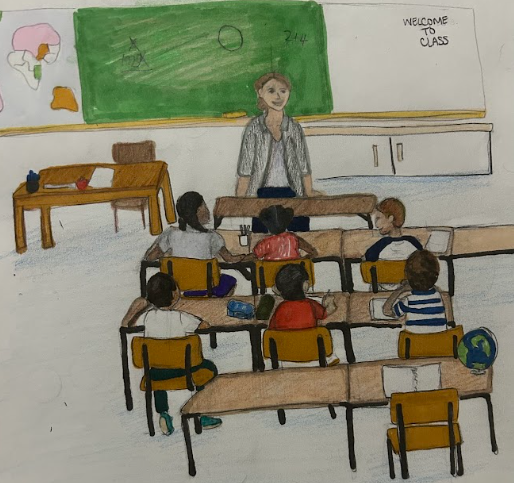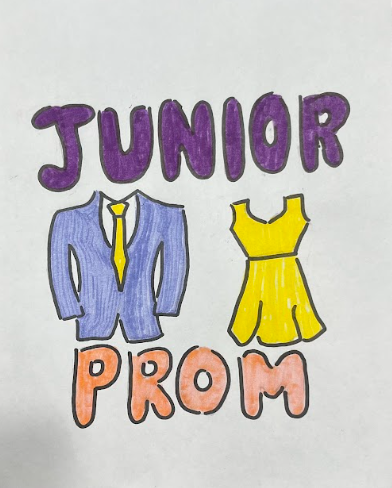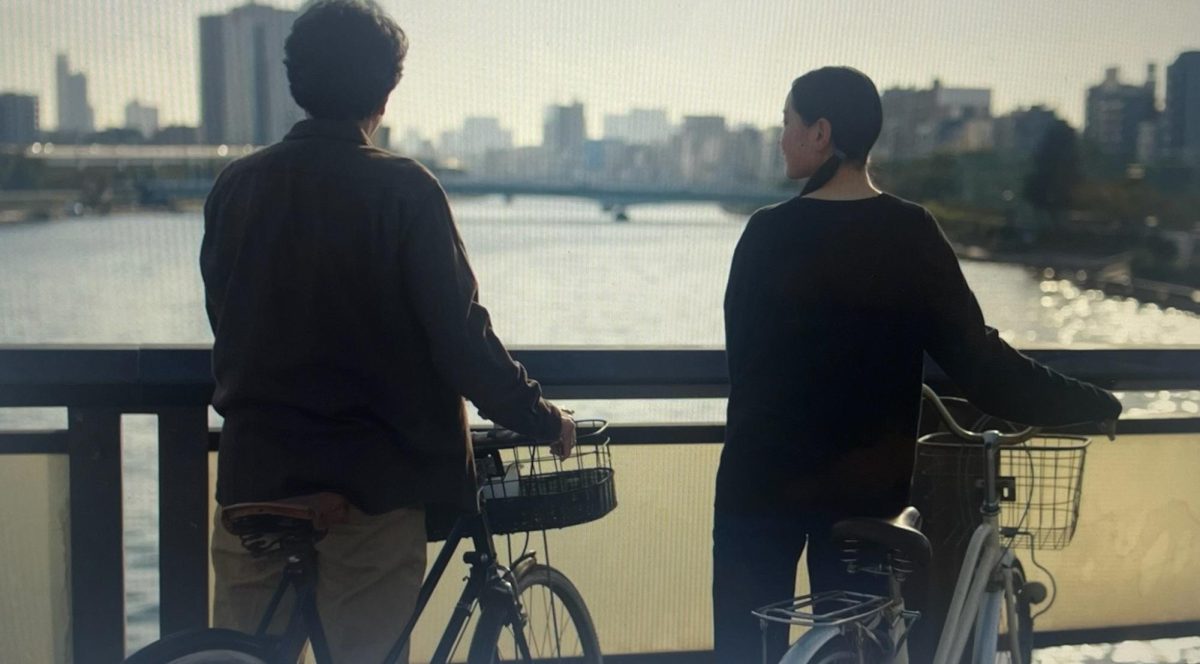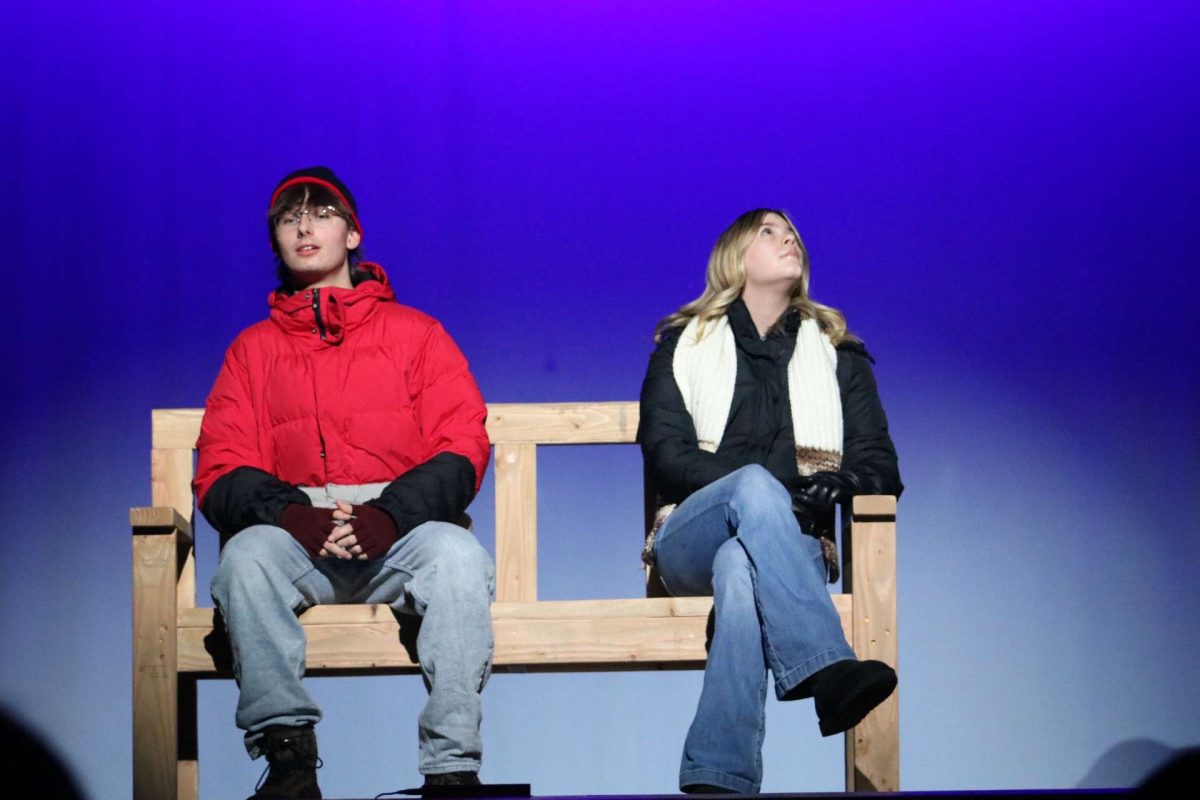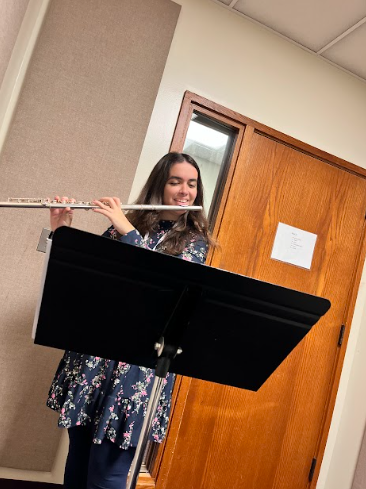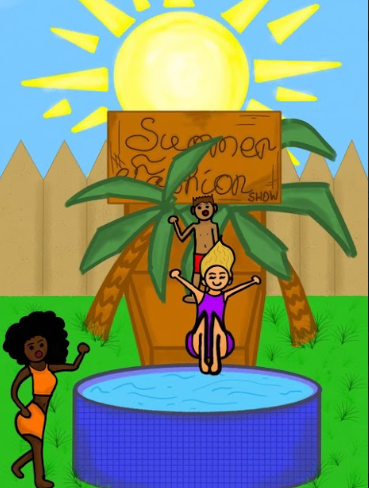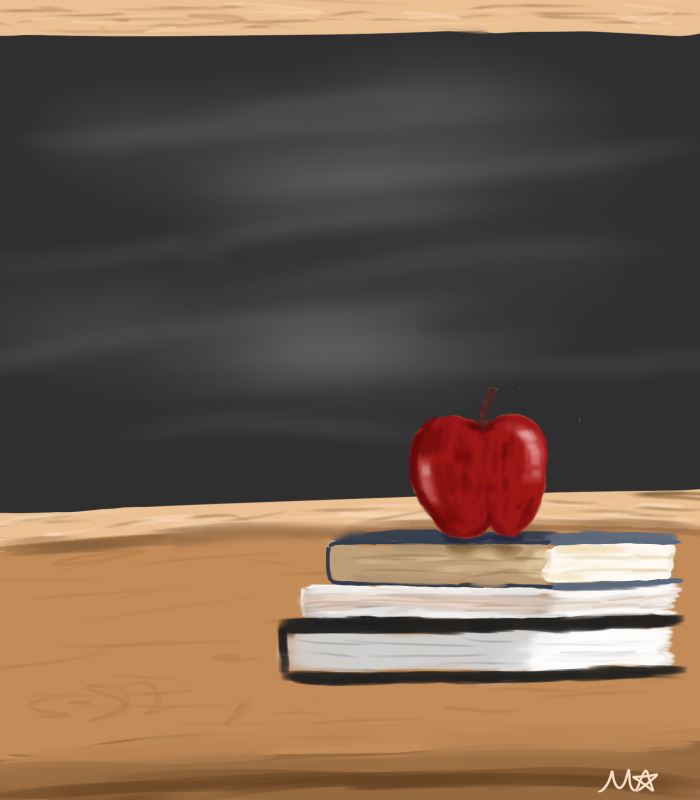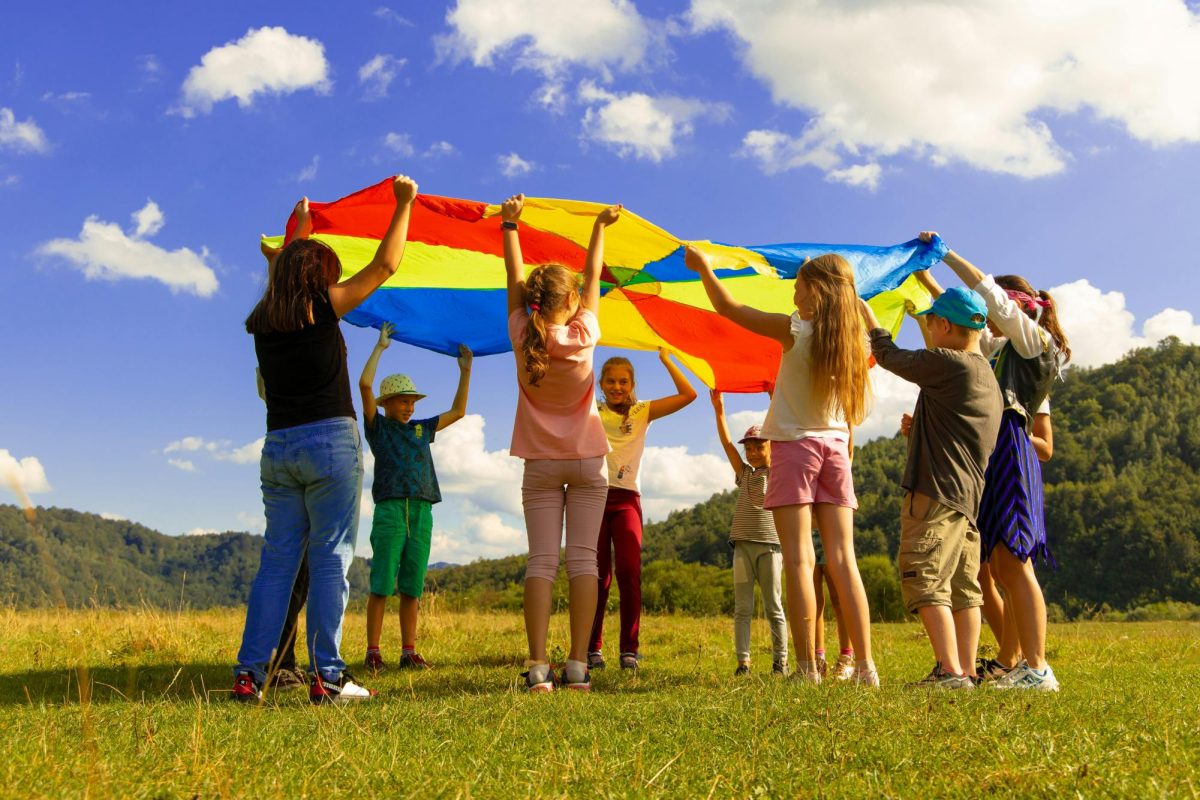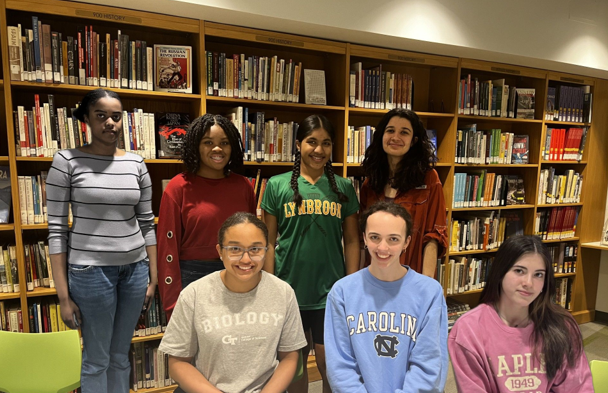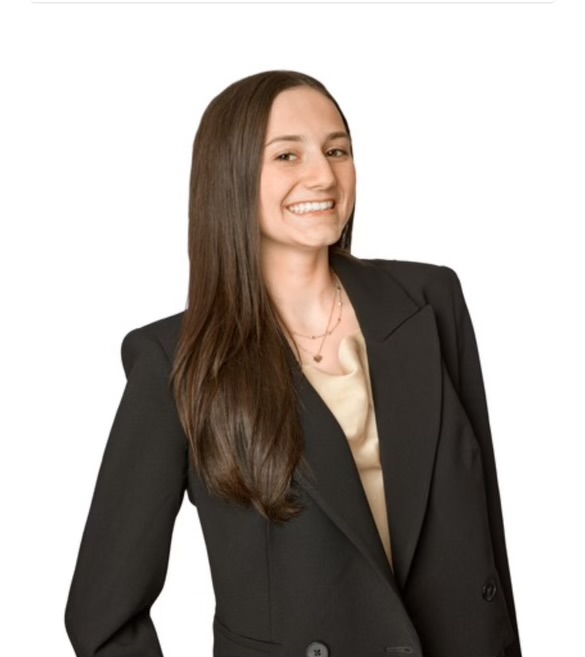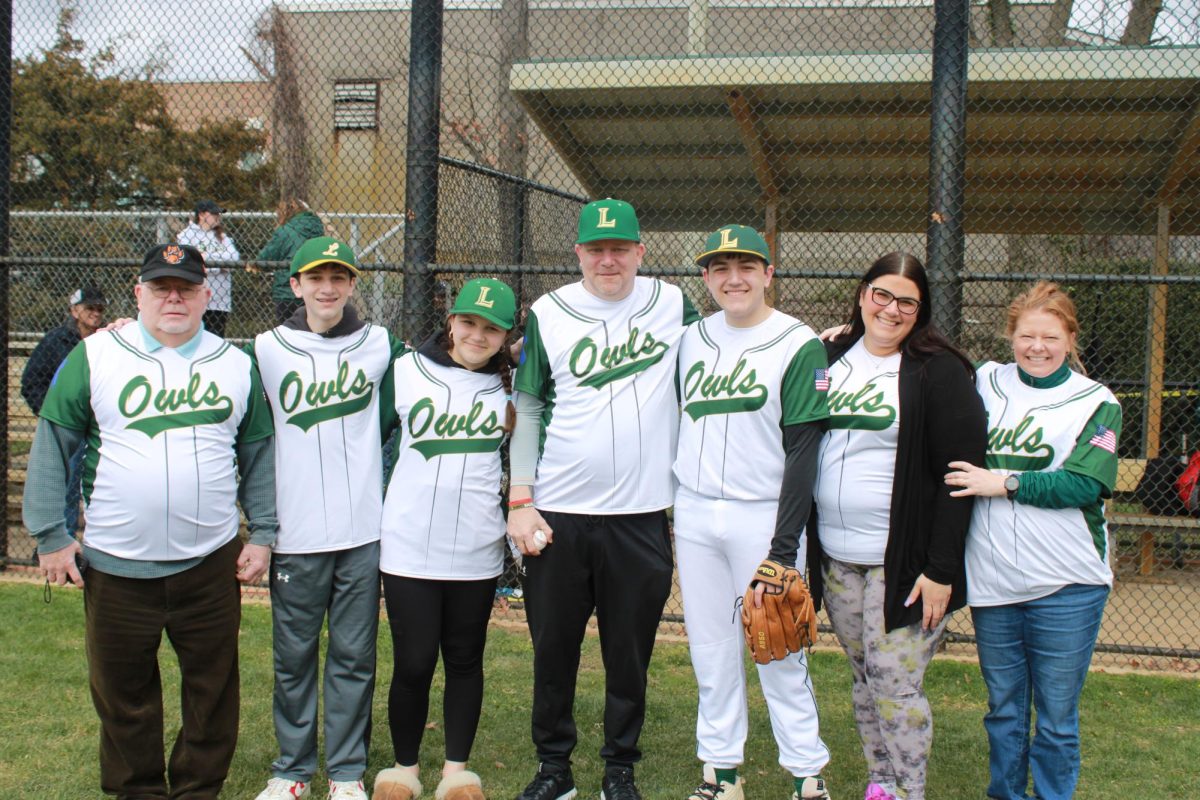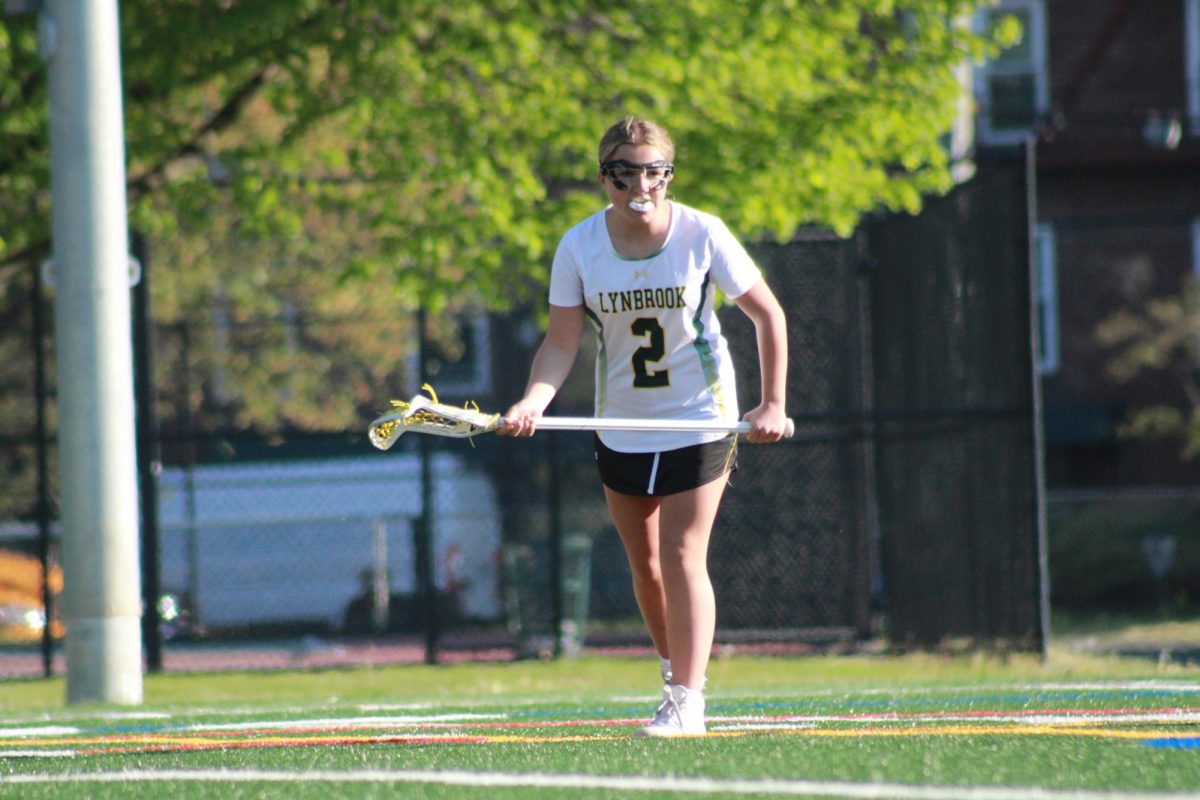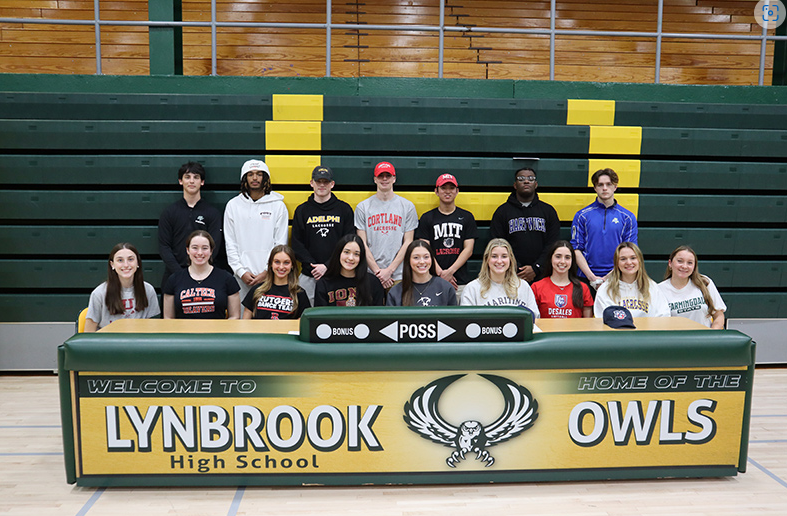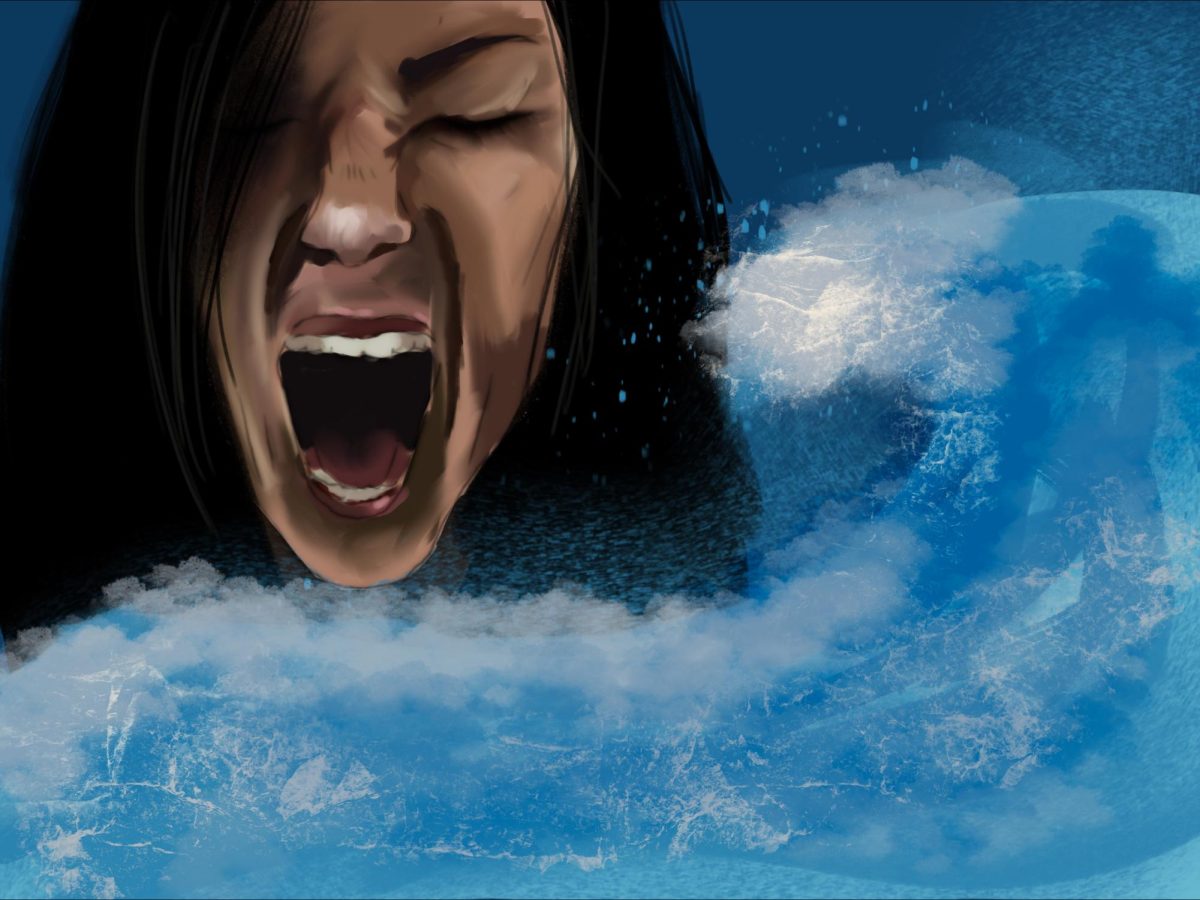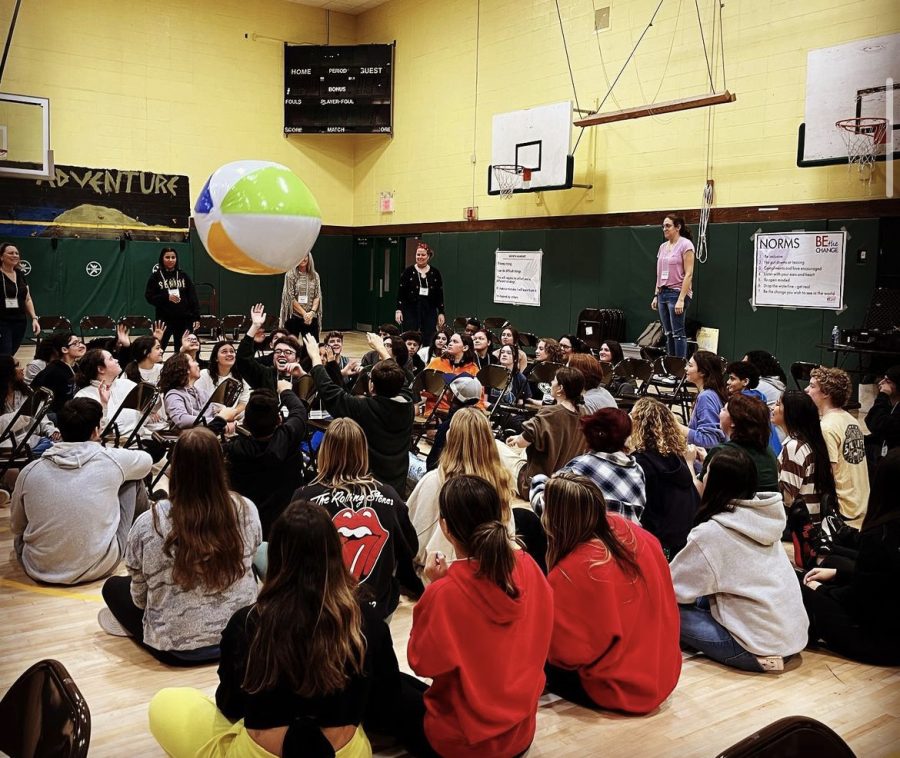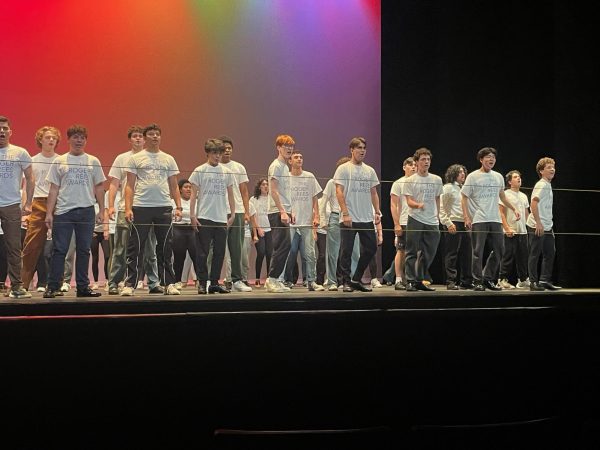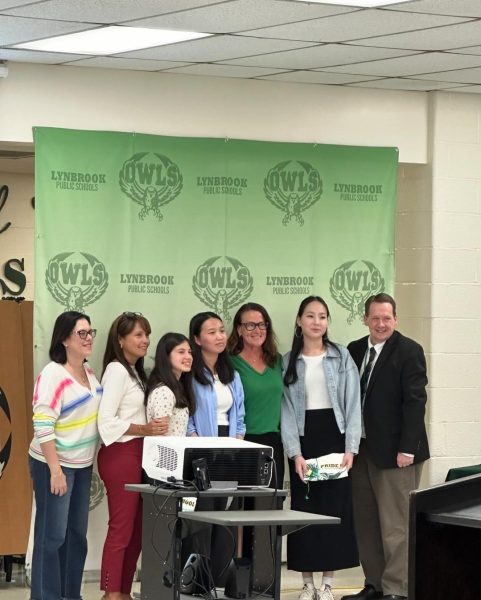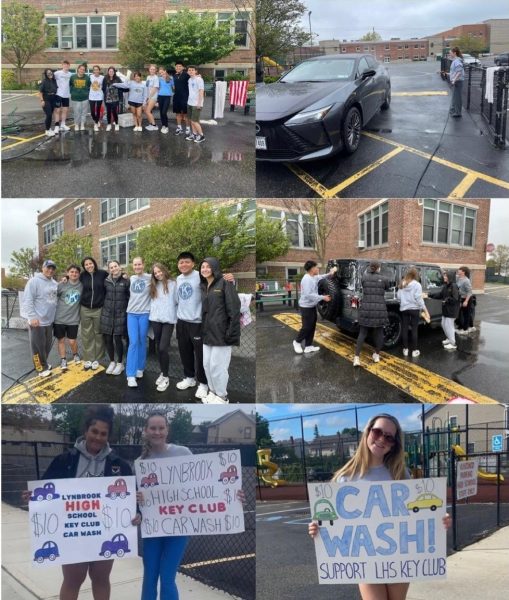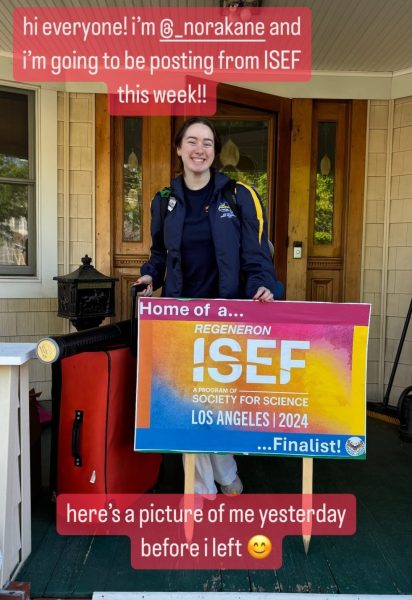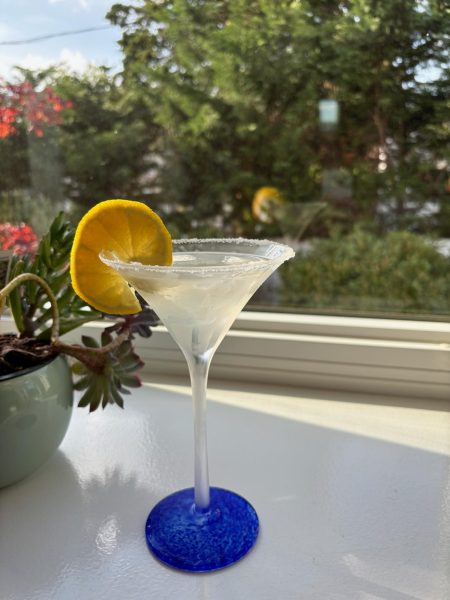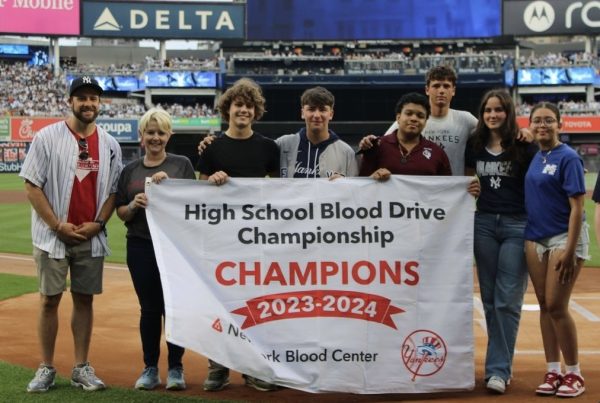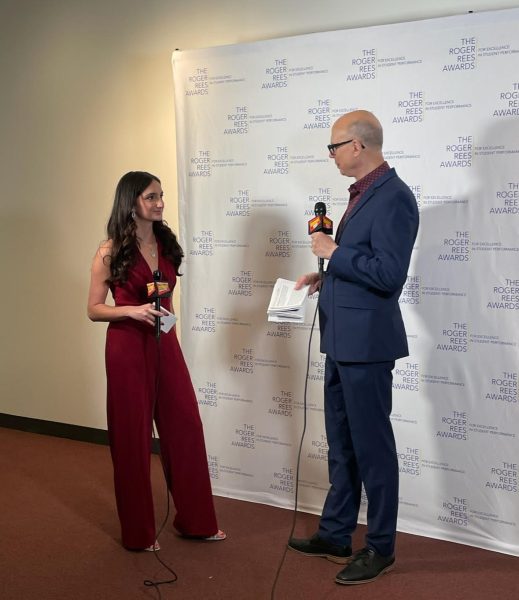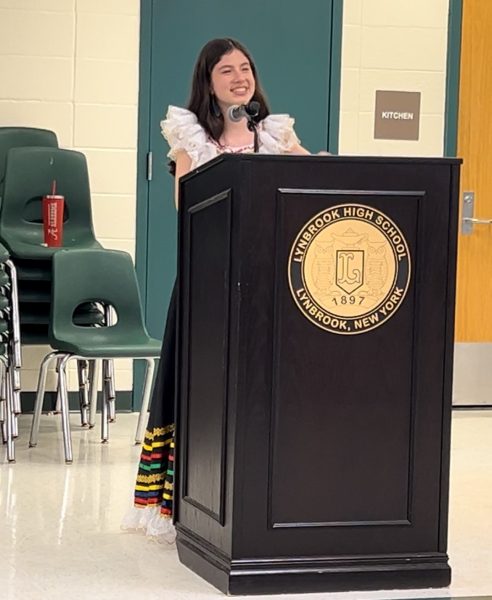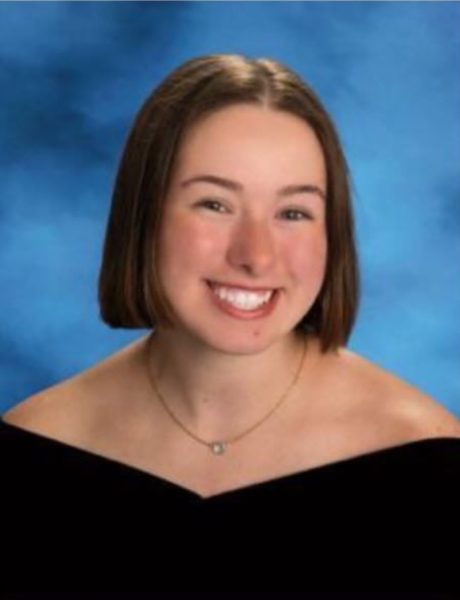LHS Takes on Challenge Day for First Time Since Pandemic
Over 60 LHS students were greeted by the cheers and claps of staff and Lynbrook community members to kick off the first Challenge Day since 2019. The small gym was turned into a party room and a safe space for the day as students and faculty were asked to “drop the waterline and get real” with themselves and others.
Physics teacher Amy Ezagui has been the advisor of Challenge Day for the past 12 years at LHS. Unbeknownst to many, there is much that goes on behind the scenes to prepare for the event. “Planning starts in the spring when we pick our day. There’s lots of coaching calls with our coordinator in California, making sure we’re set up with all of the logistics. The day before, the leaders fly in from California, check in with me the morning of, and we all make sure everyone’s where they’re supposed to be,” Ezagui shared.
Challenge Day kicks off at 9 a.m. with lots of singing, dancing, and meeting new faces. “You walk into this room and there’s music playing, adults cheering, some kids are cheering if they buy into it right away, but there’s also young people who are looking around with weird looks on their faces,” Ezagui said with a laugh. “You have to be comfortable with being silly and stepping outside your comfort zone.”
From mini dance breaks to meaningful conversations, Challenge Day incorporated a wide variety of activities. “I thought the balance between being up and active yet also sitting and really taking in the moment was really nice,” remarked freshman Sophia Schoen. “I also enjoyed personally rekindling friendships and making new ones through the program.”
One of the activities done at Challenge Day is called “Cross the Line.” The activity is done silently, with all participants lining up shoulder-to-shoulder behind a line of tape on the floor. The host then reads off a series of statements; if a statement applies to a participant, or anyone they know, they silently cross the line. Many people who did not cross the line were seen displaying the sign language symbol “I love you” to show their support, as some statements became very personal.
“With ‘Cross the Line,’ students can speak volumes about their past experiences and what’s going on in their lives without even saying a word,” Ezagui explained. “I think that’s super powerful because teenagers have a hard time expressing themselves, so it gives them an outlet to tell a story about themselves without saying a word, and to see that they’re not alone.”
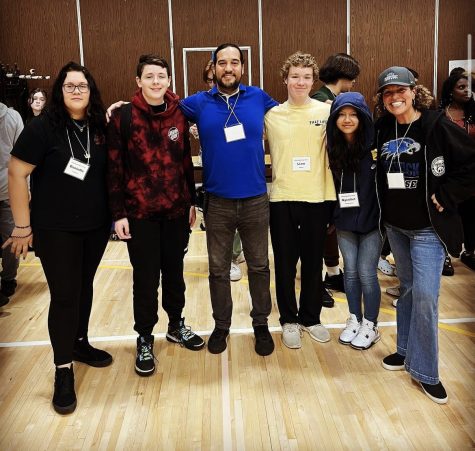
“My absolute favorite moment from Challenge Day is ‘Cross the Line,’” senior Andrew Schiller remarked. “No other activity really comes close to it, and it can inexplicably bring people together in an instant.” Schiller had participated in Challenge Day in his freshman year; now, as a senior, he has a much greater appreciation for the program: “Challenge Day was almost the exact same both times I did it; what changed was me. Trying to remember from freshman year, one of the only things I remember is being socially awkward in a room full of people I didn’t know. I think doing it again represents how far I’ve come as a person.”
Not only was the “Cross the Line” activity helpful in showing participants a different side to their peers, teachers, and community members, but the whole day featured intimate conversation settings, allowing everyone to “get real.” “Challenge Day, to me, was a beautifully executed way to help teenagers like my peers and I to open up to each other about the struggles we all deal with,” Schoen expressed. She added that the experience is about not being pressured to be vulnerable but having the courage to do so in an environment willing to help, “which is a really rare yet wonderful thing to find.”
“I like the fact that [Challenge Day] addresses the idea of an image because high schoolers are always worried about that,” Ezagui remarked. “If we started being more real and dropping that ‘waterline,’ school would be a safer place for everybody.”
Pizza was served midway through the day after participants were divided up into smaller, more intimate “family groups” and completed an activity called “If You Really Knew Me,” in which each person in the group shared something about himself or herself that another person would know if he or she really knew that person. After this activity, participants played a game of beach volleyball before delving deeper into “Cross the Line” and other reflective activities. Topics discussed throughout the day were heavy: bullying, harassment, abuse, drug addiction, poverty, racism, oppression, and discrimination, amongst many others.
“Challenge Day is an activity that, above all, brings people together,” Schiller said. “I don’t think it would hurt if LHS did it two or three more times a year.”
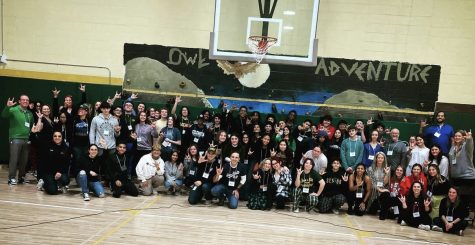
After the official Challenge Day came to a close, Ezagui and the participants were left to accomplish a task: “We’re working on trying to continue messages of Challenge Day in the school community” Ezagui explained. “The momentum can’t come from the top down, though. One of the ideas stressed was that kids have just as much power as adults. Adults, whether part of the staff or in the community, need them to see that power and empower the students to be the change.”
“If the messages of Challenge Day are going to be perpetuated, then time out of students’ days needs to be set aside to show them what to do and really drill it in,” Schiller expressed. “If the students can’t be brought to Challenge Day, then Challenge Day needs to be brought to the students.”
Ultimately, the challenge now is left in the hands of those who participated to keep the message, momentum, and movement of Challenge Day going in the halls of LHS and beyond: “I think that Challenge Day is one step that we can take to go back towards a new sense of normalcy in our world so that people can learn how [to] express themselves, to communicate with each other, and above all, to learn how to be human again,” said Ezagui.
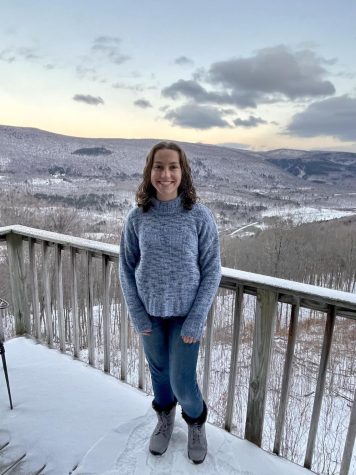
I am a member of the Class of 2023 and the Driftstone editor-in-chief. Along with creative writing, I enjoy spending time with family and friends, getting...



